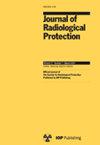Advantages of aligning with ICRP dose limits for India's nuclear program.
IF 1.4
4区 环境科学与生态学
Q4 ENVIRONMENTAL SCIENCES
引用次数: 0
Abstract
In this submission we opine on India adopting a rather stringent maximum single year dose limit, instead of harmonizing with international standards. We explore how dose limits evolved, why India has opted for a lower maximum effective dose limit of 30 mSv for a single year and argue that raising this limit to at least 50 mSv, in line with International Commission on Radiological Protection (ICRP) recommendations, would not only contribute to upcoming revised ICRP publications but also support the realization of India's nuclear ambitions.
与ICRP剂量限制保持一致对印度核计划的好处。
在本意见书中,我们认为印度采用相当严格的单年最大剂量限制,而不是与国际标准保持一致。我们探讨了剂量限制是如何演变的,为什么印度选择了一个较低的最大有效剂量限制为30毫西弗的一年,并认为将这一限制提高到至少50毫西弗,符合国际放射防护委员会(ICRP)的建议,不仅有助于即将修订的ICRP出版物,而且有助于实现印度的核野心。
本文章由计算机程序翻译,如有差异,请以英文原文为准。
求助全文
约1分钟内获得全文
求助全文
来源期刊

Journal of Radiological Protection
环境科学-公共卫生、环境卫生与职业卫生
CiteScore
2.60
自引率
26.70%
发文量
137
审稿时长
18-36 weeks
期刊介绍:
Journal of Radiological Protection publishes articles on all aspects of radiological protection, including non-ionising as well as ionising radiations. Fields of interest range from research, development and theory to operational matters, education and training. The very wide spectrum of its topics includes: dosimetry, instrument development, specialized measuring techniques, epidemiology, biological effects (in vivo and in vitro) and risk and environmental impact assessments.
The journal encourages publication of data and code as well as results.
 求助内容:
求助内容: 应助结果提醒方式:
应助结果提醒方式:


